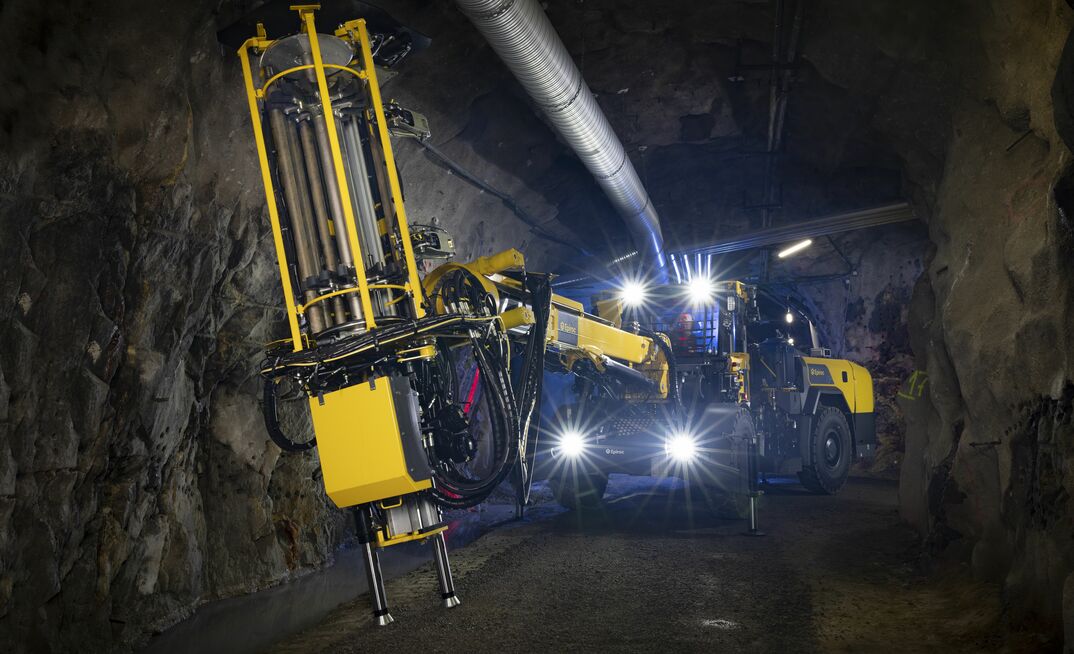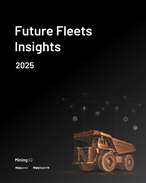Epiroc is bringing in the next generation of its battery-electric underground drills with a Simba E70SG heading to Tasmania and next-generation battery-electric development drills on the way.
The Simba production drill is designed for medium-to-large drifts with a hole range of 51-178mm.
It will soon be joined by the M20SG development drill, which will be replacing the M2C boomer. There is a M2C operating at Olympic Dam.
SG stands for Smart and Green with the smart being the rig control system that controls the machines and the green being that they are battery-electric.
YOU MIGHT ALSO LIKE
Epiroc underground drilling & rock excavation regional applications expert Justin Quigley told Australia's Mining Monthly that the SG drill units had some component changes over previous battery-electric drills the company had deployed.
One key update is the 50mm power cable, which Quigley said enhanced the drill's battery charging capabilities while simultaneously supplying power to the drill and other systems.
Epiroc adapted to customer preferences for cable size, ensuring a reliable and ongoing charging solution.
Quigley said the M2C was "going quite well" and had been "a big learning curve for everybody".
This is exactly where Australian miners will find themselves as they move to electrify their operations.
There are a lot of logistical issues to tackle to get electricity to where it is needed.
Then there are the ways electric equipment will change operations.
That said, battery-electric drills are an easy way for miners to get into the electric equipment sphere. The battery-electric part is only to move the drill to where it is needed. Once there it is connected to mine services such as water, air and electricity.
"The introduction of the drills enables an easier transition [to mine electrification] than going with battery-electric material handling equipment," Quigley said.
"With a drill you have a lot more flexibility. They are not so heavily reliant on charge times or battery swap.
"There is still a little bit of planning around tramming distances though. Are they going uphill because that is more draw on the battery. Is it downhill? You can get regenerative braking. It's the preparation around risk management and spare battery storage."
The M20SG will come with a battery pack and a two-speed automatic gearbox.
Like other Epiroc development drills the M20SG has smart automation options available such as the possibility of enabling automated drilling according to digital drill plans.
The benefit of battery-electric equipment is that it does not emit any diesel particulate matter or even much heat while tramming.
Of course, once drilling the M20SG will be just as noisy as any other development drill.
Its cab has better noise reduction – to 65 decibels – to improve the operator's working environment.
The M20SG's booms feature internal hydraulics and a hoseless design to avoid unplanned downtime for hose repairs. The hoseless design also gives the operator better visibility from the cab.
Gateway ignored
While adoption has been gradual, miners are evaluating the long-term benefits of battery-electric technology.
Quigley said he believed there was still a big reluctance in industry to change over from diesel to battery-electric.
"Having a one-off machine is a concern for customers," he said.
Epiroc has standardised the carrier frames of its drills so they can handle either a diesel engine or a battery-electric setup. Both the diesel and the battery-electric versions put energy to the wheels via a transmission.
"The battery is bigger so the diesel engine has more space," Quigley said.
"From the front-end it is no different."
When it comes to managing the battery, Epiroc has its Battery as a Service offering. Through BaaS it manages the battery for the customer.
"One advantage of BaaS is the battery becomes a recyclable component," Quigley said.
"The battery can be recycled for use in less demanding applications."
Clearing the air
With the battery-electric drills tramming, the need for ventilation to clean the DPM from the air is reduced.
That has certainly proved popular in the construction industry.
"The interest we're getting from the construction industry is around airflow and the reduction of volume of air required," Quigley said.
"There could be a future in these kind of projects but the complexity is to hire the equipment rather than buy."

























